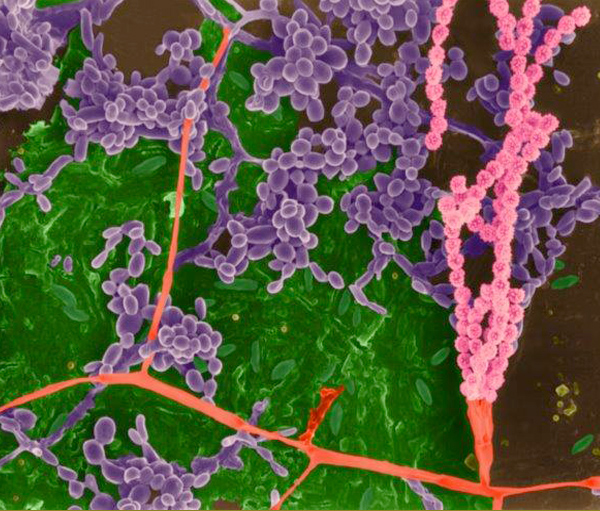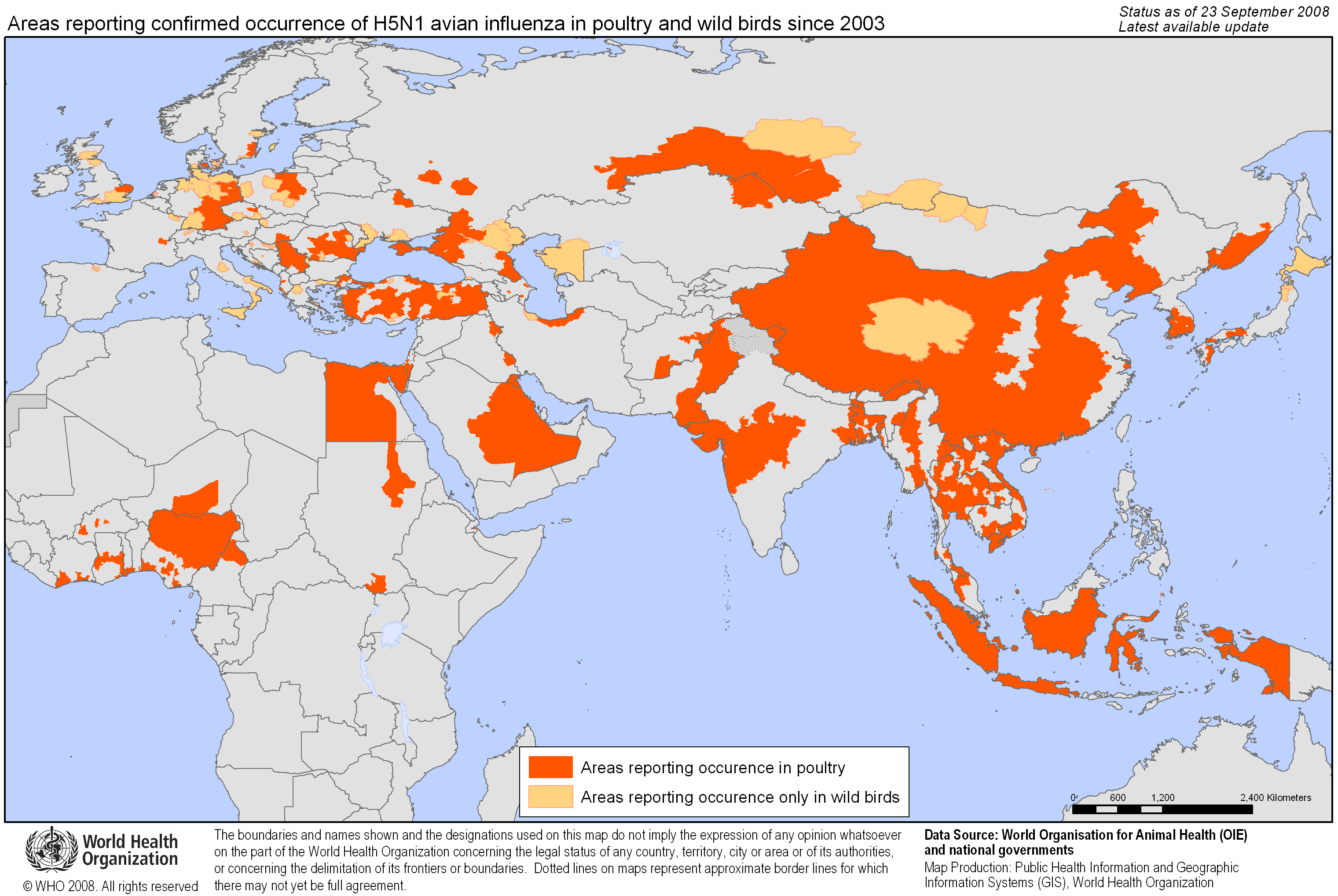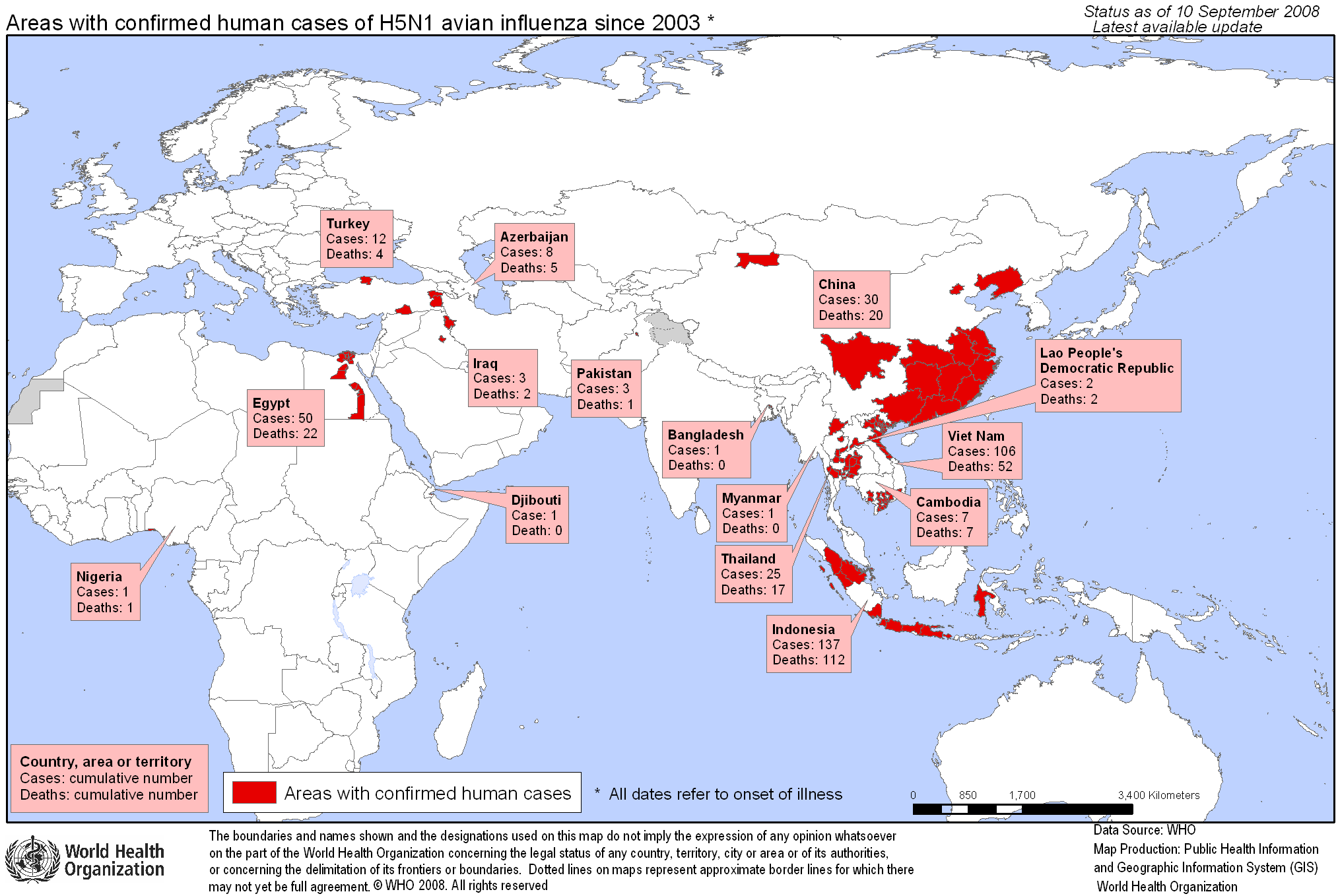
© Dennis Kunkel Microscopy
Home Resources Pathogens What is Avian Influenza (AI)?
What is Avian Influenza (AI)?

© Dennis Kunkel Microscopy
Avian Influenza is an infectious viral disease of birds caused by type 'A' strains of the influenza virus. The flu virus appears naturally among birds. Wild migratory birds such as ducks, geese, gulls and shorebirds are natural carriers of the virus, but are resistant to severe infection from the virus. However, the virus is contagious among domesticated poultry birds and can cause very severe consequences.
How is AI Diagnosed?
AI is diagnosed in humans by isolating the virus from nasal secretions by rapid testing methods.
How is AI Treated?
Ai is usually treated symptomatically including administration of plenty of fluids. Sometimes newer antiviral medications such as ostelmavir (Tamiflu) and zanamavir (Relenza) are used, which however may only be partially effective. People at risk should receive the current season's influenza vaccine only to reduce the possibility of infection with both avian and human influenza.
How is Avian Influenza Transmitted?
Avian Influenza is transmitted by contact with infected birds or surfaces contaminated with nasal secretions or excretions from infected birds.
- To poultry- Exposure of poultry to infected water fowl
- Within a flock- Bird to bird by direct contact
- Farm to farm- Movement of infected poultry, equipment and people
What is High and Low Pathogenicity Amongst AI Viruses?
There are many different serotypes of the Avian Influenza virus depending on the hemagglutinin [HA] and neuraminidase [NA] surface proteins. There are 15 different types of HA and 9 different NA. Based on the combination of these proteins, certain AI are more pathogenic than the rest.
Highly Pathogenic Avian Influenza (HPAI) infections are characterized by a severe and highly contagious illness, affecting most vital organs with mortality rates in domestic flocks approaching 100%.
Low Pathogenicity Avian Influenza (LPAI) on the other hand is the form which is commonly found in the wild bird population. Illness with LPAI is characterized by mild respiratory symptoms and has a low mortality rate in domesticated flocks. However, LPAI like all other influenza viruses has the ability to mutate and become Highly Pathogenic Avian Influenza.

What is the Current Situation of AI?

What is the Incubation Period for AI?
Most cases of AI develop within 3-7 days of exposure to infected birds or contaminated surfaces.
What are the clinical symptoms with AI infection?
People infected with AI manifest with typical flu like symptoms such as fever, cough, sore throat and muscle aches, to eye infections, acute respiratory distress, and pneumonia amongst others.
More Resources
Contact EHA Consulting Group today for more information about how we can assist your company.
We offer services for
- Retail Food Safety
- Restaurant Food Safety
- Manufacturers
- Food Trucks
- Drugs & Cosmetics
- Melons & Cantaloupes
- Produce
- Warehouses
- Food Packaging & Packaging Materials